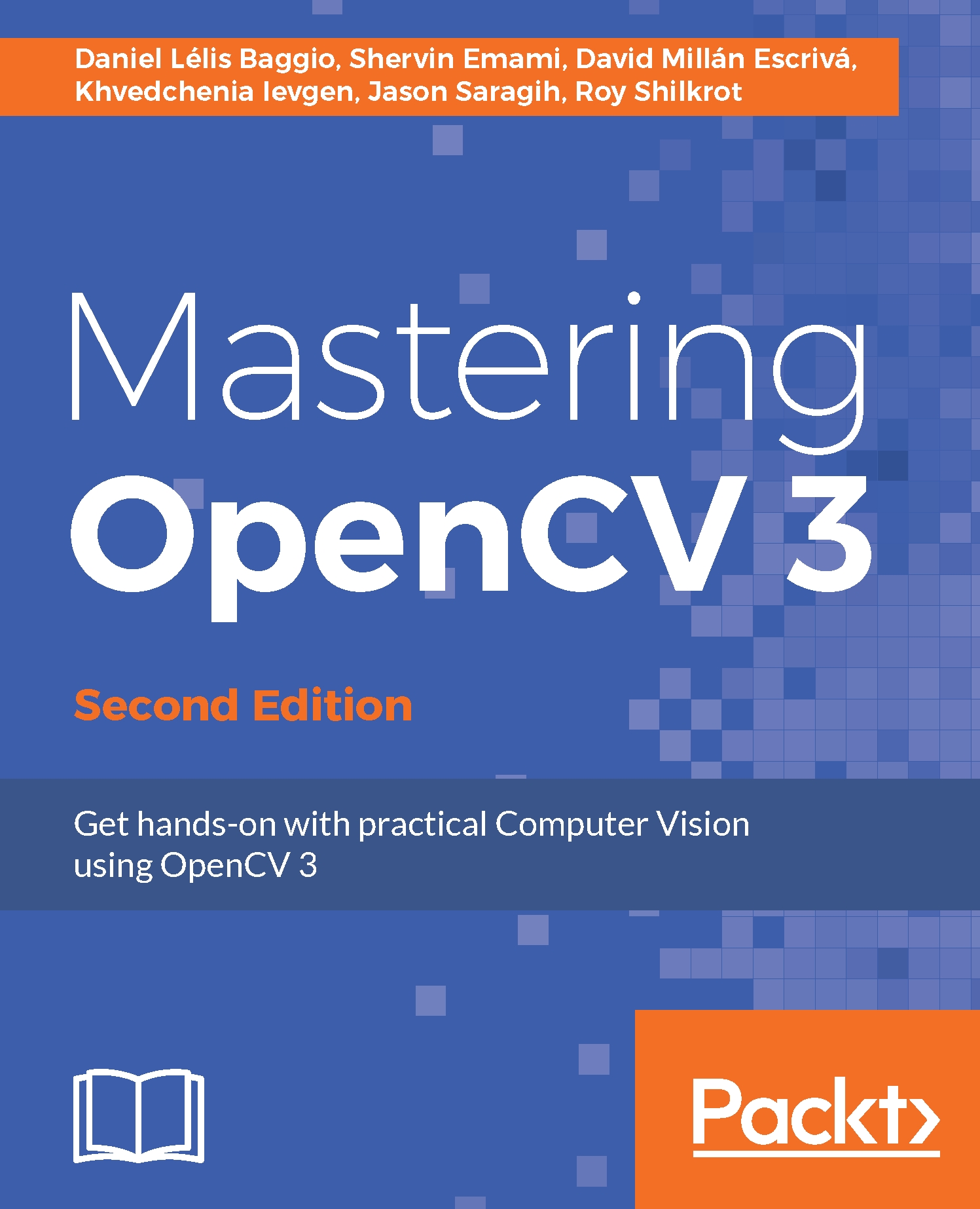In this chapter, we will discuss the notion of Structure from Motion (SfM),or better put, extracting geometric structures from images taken with a camera under motion, using OpenCV's API to help us. First, let's constrain the otherwise very b road approach to SfM using a single camera, usually called a monocular approach, and a discrete and sparse set of frames rather than a continuous video stream. These two constrains will greatly simplify the system we will sketch out in the coming pages, and help us understand the fundamentals of any SfM method. To implement our method, we will follow in the footsteps of Hartley and Zisserman (hereafter referred to as H&Z, for brevity), as documented in Chapters 9 through 12 of their seminal book Multiple View Geometry in Computer Vision.
In this chapter, we will cover the following:
- Structure from Motion concepts
- Estimating...


